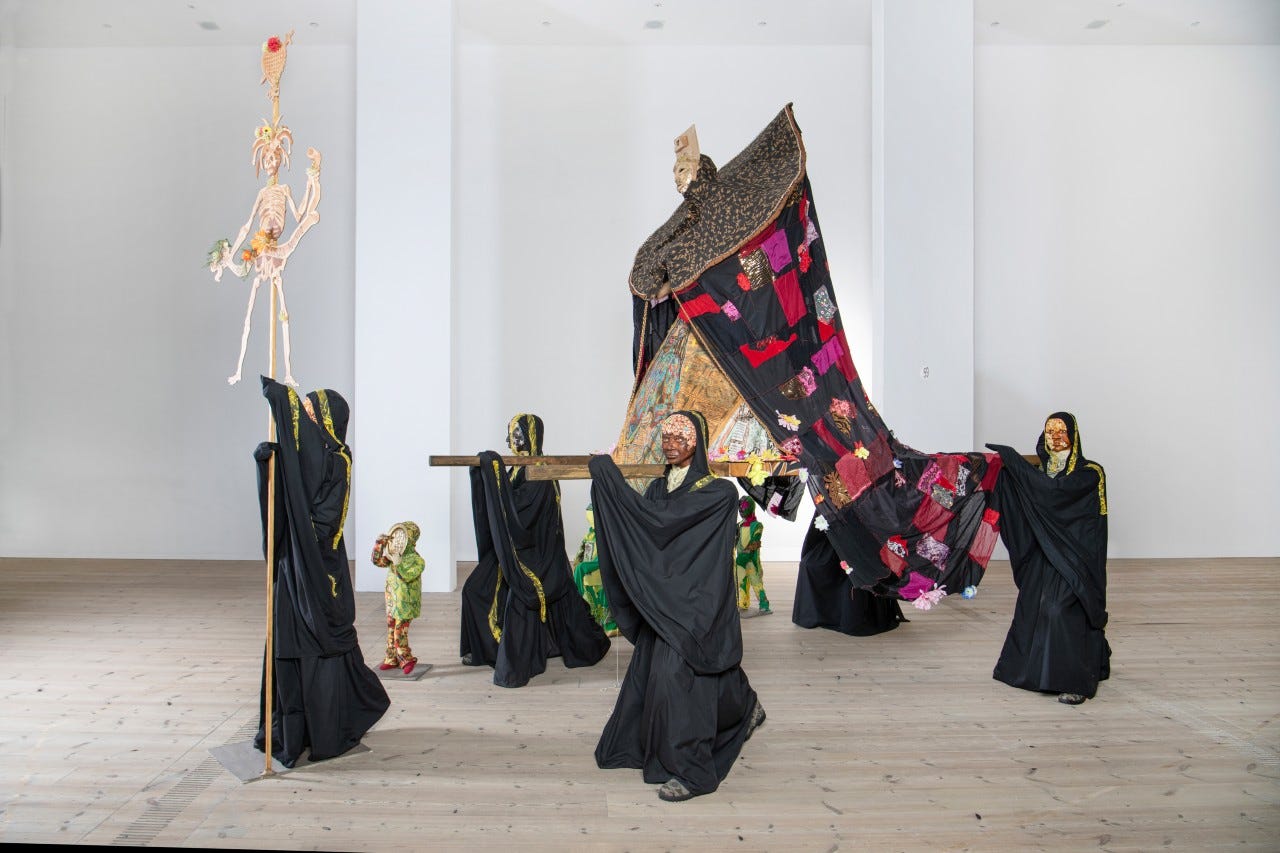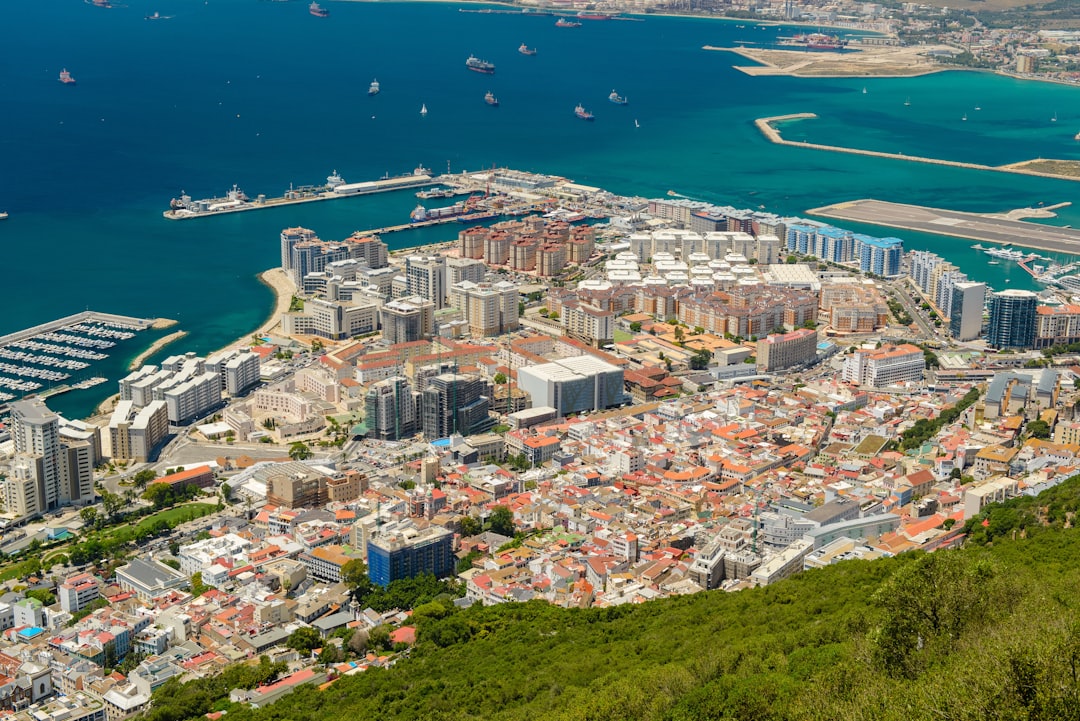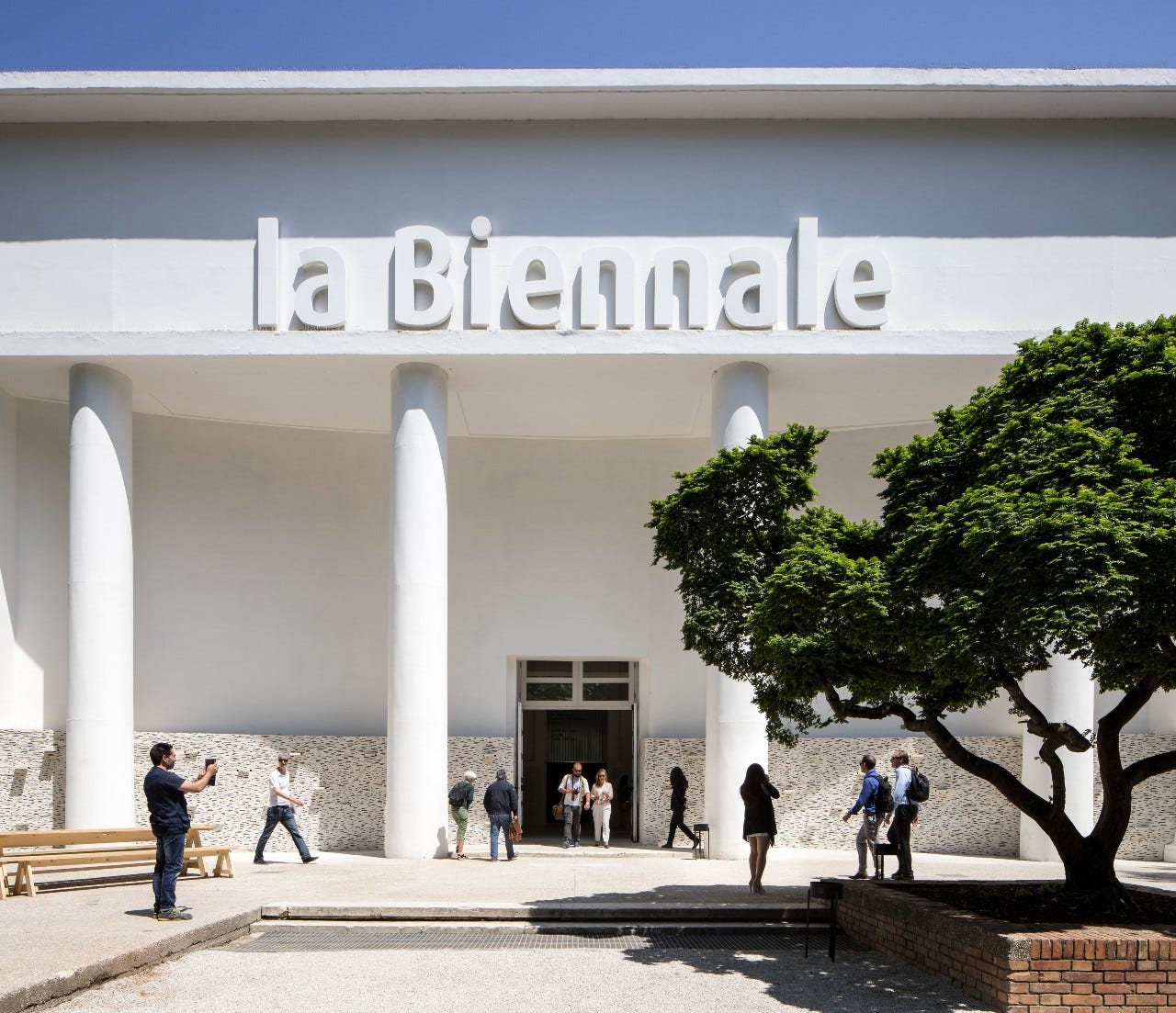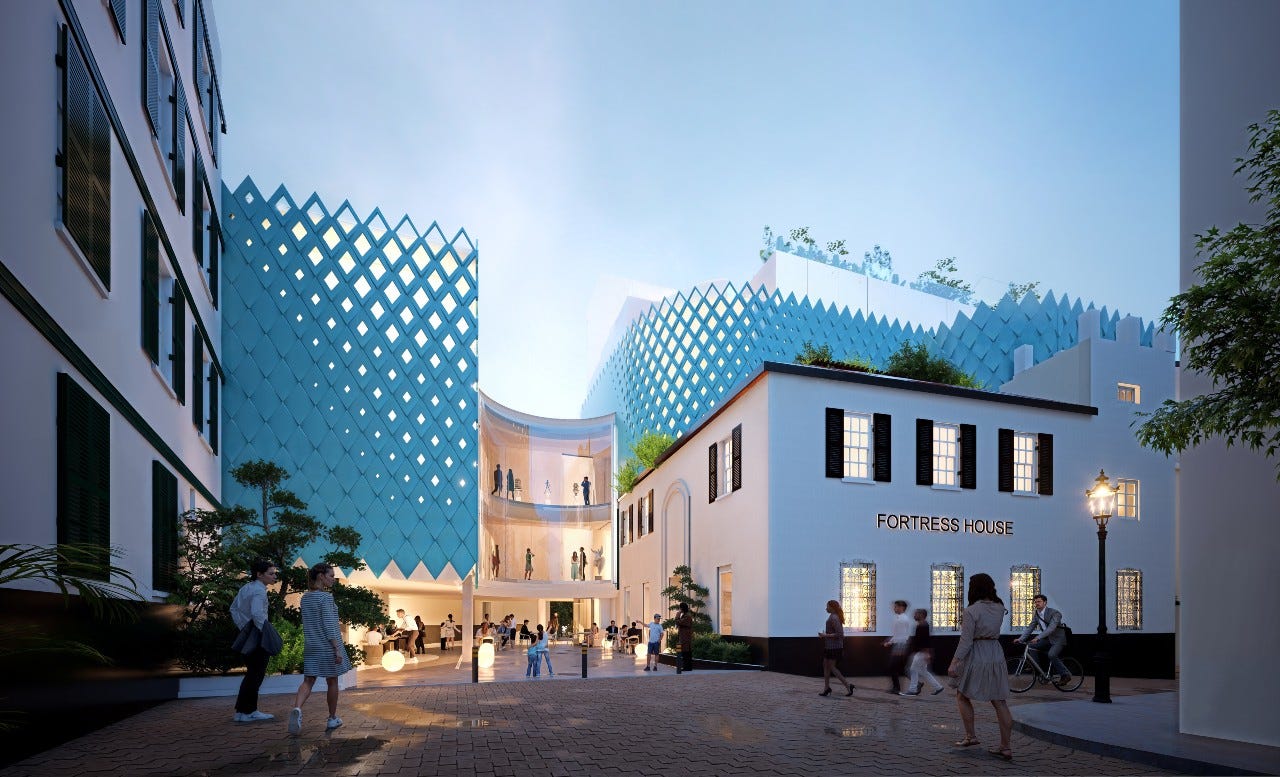Hello.
It’s mid-week, which means I’m bringing you a ‘views and interviews’ edition. The news is back on Friday.
So let’s dive into:
my Big Interview with the Director of Gibraltar’s first ever art museum
the 250 Take on why the Venice Biennale needs to combat overtourism according to my guest writer
and my Hot List of events to have on your radar such as Mary Beard’s fascinating look at the scandalous life of Roman Emperors.
— maxwell
— You can support me and every edition of this newsletter by making a small donation.
The 250 Take
This week in my opinion column from guest writers, freelance journalist and Venice local Rebecca Ann Hughes argues — in 250 words — that the city’s famous Biennale needs to react to overtourism.
💬 As mass tourism engulfs Venice, the Biennale must think carefully about its role
“When I was a child, a family visit to Venice coincided with a Biennale.
My sister and I were delighted — instead of squinting to see fusty art in a dim church, we ducked in and out of palaces and hidden gardens marvelling and laughing at the wacky displays.
This is one of the Biennale’s key benefits for Venice, a city engulfed by mass tourism (so unsustainable are the numbers, that a day entry fee is launching this month). Alongside the central shows in the Giardini and Arsenale, there are myriad collateral exhibitions scattered around the city. As such, the Biennale chimes with the council’s goal for responsible tourism by encouraging visitors to spread out beyond the hotspot sites.
The event brings ‘quality’ tourists who are likely to stay longer and explore the city in depth (as opposed to day trippers). The contemporary bonanza also helps contradict the image of Venice as a museum and shows it as a modern, evolving and vital hub.
But the Biennale has drawn criticism too for its privatisation of public spaces — commandeering the Giardini and Arsenale for half the year — and precarious and poorly-paid employment of residents and local organisations.
Having brought 800,000 tourists to Venice for the last edition in 2022 (how apt the 2024 theme and title is Foreigners everywhere), it’s time for the Biennale to take a more active role in criticising and combatting overtourism and to enmesh itself better with the resident population.”
— Rebecca Ann Hughes has lived in Italy for 9 years and is now based near Venice. She’s been writing about the country’s food, wine, art, culture and politics for publications including the Independent, the Telegraph, National Geographic and Apollo Magazine.
✨ The 60th Venice Biennale begins on 20 April.
The Big Interview
The ‘Bilbao effect’ is museum lore. The economic transformation to the city when Bilbao Guggenheim opened in the late 1990s was so great that seemingly every mid-size city has had a go at the playbook. If they build it, they will come etc.
Now nearly 30 years later, what worked for a city on the northern edge of the Iberian Peninsula is being attempted right on the southern tip. Yes, Gibraltar is aiming for a Bilbao-esque boost.
Last month it was announced that a major new private museum called Fortress House is due to open in the British Overseas Territory. It will be its very first contemporary art institution.
Fortress House will be home to an art collection of world-class names in a fully overhauled 18th century building in the heart of the historic old town. There are plans for a hotel and restaurant too.
While literal scale might be much smaller than in the Basque city, the ambition for the tiny territory is relative. Currently just over 32,000 people live there, but the striking new four-storey venue will be a hugely significant cultural hub.
The hope is that visitors across Spain and the rest of the Europe and beyond will flock to the new art destination when it opens its doors in the autumn of 2025 — and that they will drive economic prosperity.
So to get all the details on the just-revealed Fortress House plans, this week I speak to its Director Henry Little.
Here Henry tells me about the mechanics of building a new art collection, how the venue hopes to complement Gibraltar’s grassroots arts scene, and how it aims to replicate Bilbao’s folklore-like success.
***
Hello Henry. So, what’s your elevator pitch for the Fortress House project?
It’s a new, world-class contemporary art museum that combines the thrill of modern architecture with the rich history of an 18th-century landmark — to put Gibraltar on the global cultural map.
Tell me a bit about the art collection. How was it amassed?
From the beginning, I’ve been leading the planning and development of the museum's collection — an immense privilege. It currently encompasses over 150 pieces, featuring a diverse range of work that includes paintings, sculptures, installations, photographs, prints, and works on paper.
We had a strong vision for the collection that — coupled with the opportunity to construct a bespoke building to accommodate it — allowed us to acquire numerous monumental works as well as collecting several artists in depth.
The collection includes the entirety of Lindsey Mendick’s joyously detailed presentation Till Death Do us Part (2022) which was shown in the Hayward Gallery’s outstanding Strange Clay exhibition. Comprised of five distinct pieces, it felt important to keep the group together so that the incredible worlds Lindsey creates with her sculptural installations could be experienced by our visitors in their full glory.
In the same vein, we acquired a monumental group of figures from Hew Locke’s outstanding work The Procession, a vast parade of characters which was initially commissioned for the Duveen galleries at Tate Britain. This work was partly responsible for inspiring several design revisions, leading us to propose a dramatic double-height space in one of the galleries with eight-metre-high ceilings.

Kiki Smith is an emblematic artist for the collection, with a powerful body of work addressing sexuality, spirituality, and the human condition. So, we were especially delighted to have acquired important works from across her career including both of her seminal, life-size bronze figures of Virgin Mary (1992) and Mary Magdalene (1994). They are commanding, deeply affecting works which have a powerful impact.
Will you be hoping to acquire more works?
Absolutely. The acquisition programme is ongoing, and the collection will continue to grow.
One of the things we wanted to develop was a thematic approach to exploring the collection, something that would connect us to our audiences and resonate with future generations. So, the collection is built around three core thematic strands: sexual politics, gender, and representation; human frailty and the human condition; and technology, society, and evolution.
The works mainly come from post-1970 because this period marks a crucial shift for feminist artists and art historians, influenced by Linda Nochlin's 1971 landmark essay, "Why have there been no great women artists?"
We intentionally curated the collection to predominantly feature female artists, to counteract the historical gender bias found in traditional museum collections. We have works by artists such as Ida Applebroog, Anne Collier, Sara Cwynar, Tracey Emin, Sylvie Fleury, Clementine Keith-Roach, Ella Kruglyanskaya, Linder, Sarah Lucas, Paula Rego, Cindy Sherman, Rebecca Warren, and Nicole Wermers, among others.
Why the 18th-century former residence for the Governor of Gibraltar? And how ambitious is the architectural work?
It’s hugely ambitious. The chance to reinvent, reimagine and transform a heritage building into a 21st-century museum is an extraordinary opportunity.
Still, we’re acutely aware of our responsibility given that we’re working with a precious piece of Gibraltar’s history. The existing building has given us our name and will provide a dramatic contrast with the new building which will be sensitively wrapped around and behind it. It’s important to understand how rare this is. Gibraltar is densely built, and Fortress House is remarkable not only for its history, but also its size and central location.
There are so many complexities associated with adapting older buildings. We are lucky to work with the very talented team at Gamma Architects who have been central to this project from the outset. They have developed a compelling solution in careful consultation with Gibraltar’s heritage authorities which retains the delicate fabric of the original building, as well as many heritage features such as tiles and fireplaces.
The building will be completed by a rooftop sculpture terrace offering dramatic views across the city. This marks a first for Gibraltar, nothing of this kind has been attempted before.
How is the project funded — and how will the day-to-day operations be paid for?
It’s an entirely private venture so we’re in a different position to publicly funded institutions, but we’ve still had to consider revenue generation as it will be central to our future sustainability. Like so many other museums we want to offer more facilities to the public beyond our core cultural activities so there will be cafe and a restaurant which we hope will become destinations in their own right.
Fortress Studio will occupy several thousand square feet of the ground floor — it will be a place for children to make art as part of a structured programme of themed, instructor-led workshops.
Exhibitions and displays will be free to all Gibraltarians, but some of the Fortress Studio programmes will be fee paying and there are other revenue streams in development.
How many jobs will the project create?
Initially we expect the museum to create upward of twenty jobs across curatorial, art handling, front of house, marketing, administration, security, and hospitality. We are building a type of organisation that does not yet exist on this scale in Gibraltar, which presents a new and unique resourcing challenge.
We know that culture can support economic growth, driving footfall and the visitor economy, and attracting clusters of creative businesses. And our location is a major advantage that we hope will add spark to the region’s cultural and tourism offer.
What's the wider Gibraltar arts scene like?
There is an exciting, enthusiastic, and committed grassroots art scene in Gibraltar including studio providers, private and public exhibition spaces, and several historic collections. We’re excited to join that community.
In time, we might attract other non-profit or artist-led spaces or even well-known commercial galleries to open in the region. It would be wonderful for us to be catalysing force energising a new era in Gibraltar’s cultural scene.

Our ambition is to have a comprehensive programme of engagement with our communities and our educational offer is as ambitious as our building plans. A head of education and interpretation will run the programme in Fortress Studio, as well as the free-to-access educational outreach efforts. This will comprise talks, tours, symposiums, and partnerships with local schools. Our aim is to bring the world-leading artists in our collection to Gibraltar to share their insights and stories behind their work, as there’s a huge appetite for this.
We have looked closely at the impact of Museo Picasso and Centre Pompidou in Málaga which now comprise the city’s cultural centre of gravity, drawing visitors locally, regionally, and internationally. Historically, the Guggenheim Bilbao offers a striking example of how a museum can define a place. We want travellers to hear the word Gibraltar and immediately associate it with Fortress House.
Thinking to autumn 2026, what will success look like a year after opening?
For me, success would be becoming a key player in the cultural landscape of Gibraltar and having a positive impact on its visitors and wider community. This kind of transformation doesn't happen overnight.
A natural milestone to aim for would be 100,000 visitors but I count weaving Fortress House into the fabric of Gibraltar's daily life, making it a place where locals and tourists alike naturally gravitate as a success.
Finally, what do you anticipate will give you the most sleepless nights over the next 18 months?
I’m mindful of the intricate dance involved in nailing down the opening date as there is so much work ahead of us over the next 18 months. But there's an undeniable buzz of excitement among the team. We're not just building a museum; it’s a destination that will inspire and educate for years to come. The anticipation of seeing our vision come to life, of opening our doors to the public and sharing what we've created — that drives us forward.
✨ Fortress House will open in Gibraltar in autumn 2025
The Hot List
My curated round-up of what’s new to see, do, watch, read and more. From the UK — and around the world.
*If you purchase through some links in this section, I may earn an affiliate commission
EXHIBITION
1️⃣ Ranjit Singh: Sikh, Warrior, King | Wallace Collection, London
“A glorious show” is the Evening Standard’s verdict on this display exploring the life of the great Sikh leader Ranjit Singh. 100 artworks, including jewellery and weaponry from the Sikh Empire can be seen, plus objects from his court.
opens today — until 20 October 2024 | find out more here
BOOK
2️⃣ Prospect Cottage: Derek Jarman's House | by Gilbert McCarragher
The interior of filmmaker and artist Derek Jarman’s home in Dungeness — now saved for the nation thanks to an Art Fund campaign — has never been documented before. This new book with 160 photographs offers a first-time look inside.
published by Thames & Hudson | buy your copy now

EXHIBITION
3️⃣ Goddess: Brave. Bold. Beautiful. | ArtScience Museum, Singapore
An adapted version of an ACMI (Australia’s national museum of screen culture) exhibition sees the daring superstars of 120 years of film celebrated. With a new focus on Asian film luminaries, see 200 artefacts, costumes and artworks.
now open — until 11 August 2024 \ find out more
DOCUMENTARY
4️⃣ Meet the Roman Emperor with Mary Beard | BBC iPlayer
Classicist — and British Museum trustee — Mary Beard lifts the curtain on the emperors of Rome including famous figures Augustus, Nero, Hadrian and Marcus Aurelius. An eye-opening insight into power and paranoia.
EXHIBITION
5️⃣ Yinka Shonibare CBE: Suspended States | Serpentine South Gallery, London
The first solo exhibition of Shonibare’s work for over 20 years in a non-commercial London gallery, it showcases new pieces and major installations to interrogate contemporary culture and national identities.
opens 12 April — until 01 September 2024 | discover more
Enjoyed this newsletter? Donate now to support me and my publication as I continue to bring you insights from the world of museums, galleries, art and heritage in 2024





